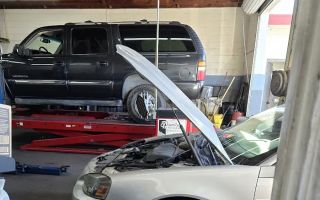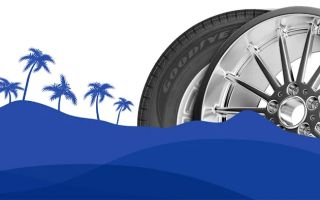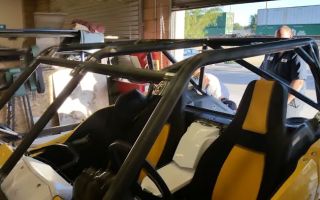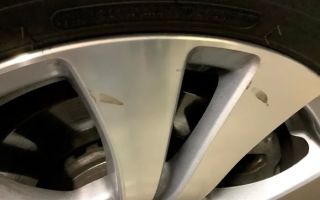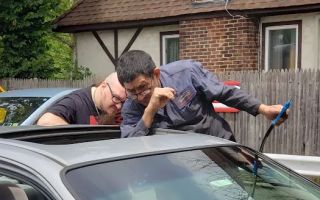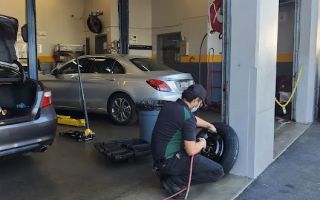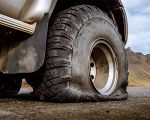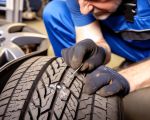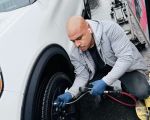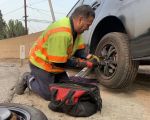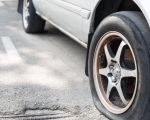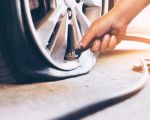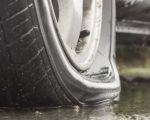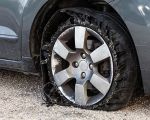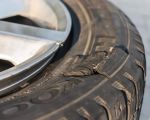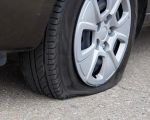What to Do If I Can’t Get My Flat Tire Fixed Immediately: A Comprehensive Guide
It’s one of those moments you dread when you’re driving: a sudden thump, followed by the unmistakable feeling that something’s not right with your car. You pull over and quickly realize—your tire is flat. But what if you can’t get your flat tire fixed immediately? I’ve been in this exact situation before, and it can be frustrating, especially if you’re in a hurry or stuck in a location where help seems far away. Over time, I’ve learned a few tricks and tips to help manage the situation until you can get proper assistance. In this guide, I’ll share the steps you can take if you can’t fix your flat tire right away, how to stay safe, and when to call for professional towing or roadside assistance.

MR. TIRE INC.
2078 New York Ave, Huntington Station, NY 11746, USA
1. Understanding Why Flat Tires Happen
Before diving into what to do when you're stuck with a flat tire, it’s useful to understand why tires go flat in the first place. I’ve had my fair share of flat tire incidents over the years, and sometimes the reason for a flat is completely unexpected. Flat tires can happen for a number of reasons:

MR. TIRE INC.
2078 New York Ave, Huntington Station, NY 11746, USA
1.1. Punctures from Sharp Objects
The most common cause of flat tires is punctures from sharp objects like nails, glass, or screws. One time, I was driving down a city street when I ran over a nail that punctured my tire. At first, I didn’t notice anything, but after a few minutes, my car started pulling to one side, and I realized my tire was losing air. It’s one of those annoying but typical situations where you’re simply in the wrong place at the wrong time. A quick check can usually confirm that something sharp has punctured the tire, and the air is escaping slowly.
1.2. Valve Stem Damage
Another cause I learned about is valve stem damage, which is when the rubber valve stem becomes cracked or damaged. I had a situation once when the air pressure in my tire was low, and after inspecting it, I noticed that the valve stem had become cracked. This type of damage doesn’t always result in an instant flat, but it can lead to slow leaks. If left unattended, it will eventually lead to a flat tire.
1.3. Tire Wear and Tear
As tires age, they naturally lose some of their resilience, and the tread begins to wear down. A worn tire is more likely to develop leaks or blowouts, especially if it’s driven over sharp objects or uneven surfaces. I remember when I had an old car that I didn’t drive too often. One day, the tire blew out while I was driving to the grocery store, and I realized the tire had been worn down for a while without me noticing. Tire maintenance is crucial to avoiding these situations, but sometimes, even with the best care, a flat will still happen.
2. What to Do When You Can’t Fix Your Flat Tire Immediately
So, your tire is flat, but you can’t get it fixed right away. This situation can be frustrating, especially if you’re on the road and in a hurry. When I was stranded on a highway once with a flat tire and no way to fix it immediately, I learned that there are several steps you can take to ensure your safety and help manage the situation until you can find a solution.
2.1. Ensure Your Safety First
The first and most important step is ensuring your safety. This is a mistake I’ve seen people make too many times: trying to handle a flat tire on the side of the road without considering traffic or environmental hazards. When I had a flat on a busy street, I quickly moved my car to a safe, flat spot away from moving traffic. I also turned on my hazard lights to alert other drivers. If you’re on the highway or another high-traffic area, this is especially important. Avoid standing too close to the car, as the last thing you want is for another vehicle to lose control and hit you.
2.2. Check the Tire Pressure
If you’re unsure whether the tire is completely flat or just low on air, it’s a good idea to check the tire pressure. I’ve found myself in a situation where the tire wasn’t completely flat, but just needed a little air to get to the nearest gas station or repair shop. If you have a tire pressure gauge, use it to check how much air is in the tire. If it’s only a slow leak, you might be able to drive slowly for a short distance to a safer location or a nearby service station.
2.3. Use a Tire Repair Kit (Temporary Fix)
If you’re in a pinch and can’t get to a repair shop immediately, a tire repair kit can serve as a temporary fix. I’ve used these kits in emergencies, and while they’re not a permanent solution, they can get you to a mechanic or tire shop. Most kits come with a sealant and air compressor to temporarily plug the hole and reinflate the tire. I used a kit on a flat tire once while traveling through a rural area, and it worked well enough to get me to the nearest town for a proper repair. Just remember, a tire repair kit is a short-term fix—it’s important to get the tire properly repaired or replaced as soon as possible.
2.4. Call Roadside Assistance or a Tow Service
If you’re unable to fix the flat tire or if the damage is too severe for a repair kit, it’s time to call for professional help. Roadside assistance services can be a lifesaver in these situations, especially when you’re stuck in an inconvenient or unsafe location. When I had a flat tire and couldn’t fix it myself, I called my roadside assistance service, which sent a technician to change the tire for me. They arrived within 30 minutes, and I was back on the road in no time. Some tow services also offer tire changes, so if you don’t have roadside assistance, it’s worth calling a local towing company for help.
3. The Importance of Proper Tire Maintenance
After dealing with multiple flat tires, I’ve learned that prevention is key. Proper tire maintenance can significantly reduce the chances of experiencing a flat when you least expect it. Here are a few steps I take regularly to maintain my tires and avoid flat tire issues:
3.1. Regularly Check Tire Pressure
Keeping your tires properly inflated is essential for safety and longevity. I check the tire pressure once a month, and especially before long road trips, to make sure they’re at the recommended level. Overinflated or underinflated tires can wear out unevenly and are more likely to develop issues like flats or blowouts. Most gas stations have air pumps where you can quickly check and inflate your tires for free or for a small fee.
3.2. Inspect Tires for Damage
It’s also important to inspect your tires for visible signs of wear, such as cracks, bulges, or embedded nails. I often check my tires after driving through construction zones or on rough roads, as they are more prone to picking up sharp objects that could cause a flat. Regular tire rotation is also important, as it ensures even wear across all four tires, extending their lifespan.
3.3. Replace Worn Tires Promptly
If your tires are worn down and the tread is low, it’s time to replace them. Worn tires are more prone to flats, and they can also make driving more dangerous, especially in wet conditions. I learned the hard way when my tires were getting too thin, and I ended up getting a flat in a storm. Replacing old tires before they cause a problem is one of the best ways to avoid unexpected breakdowns.
4. Conclusion: When to Seek Professional Help for Flat Tires
While there are a number of temporary fixes you can do when you can’t get your flat tire fixed immediately, the best course of action is always to get professional help as soon as possible. Whether it’s calling roadside assistance or having your car towed to a repair shop, timely intervention can save you time, money, and frustration. I’ve had my share of flat tire issues, and I’ve learned that staying calm, knowing your options, and taking the right steps can make all the difference in handling the situation effectively. Prevention is key, but when a flat tire happens, knowing what to do is just as important.


